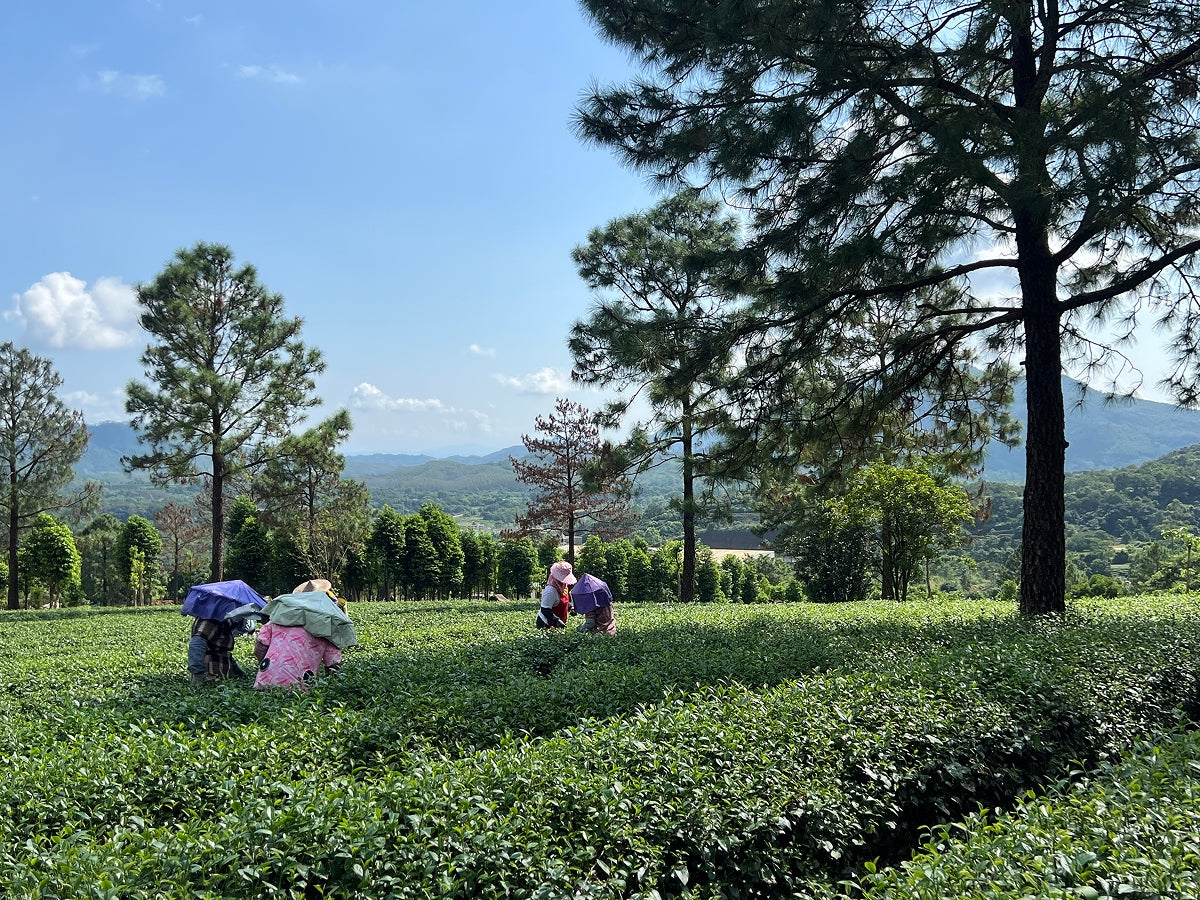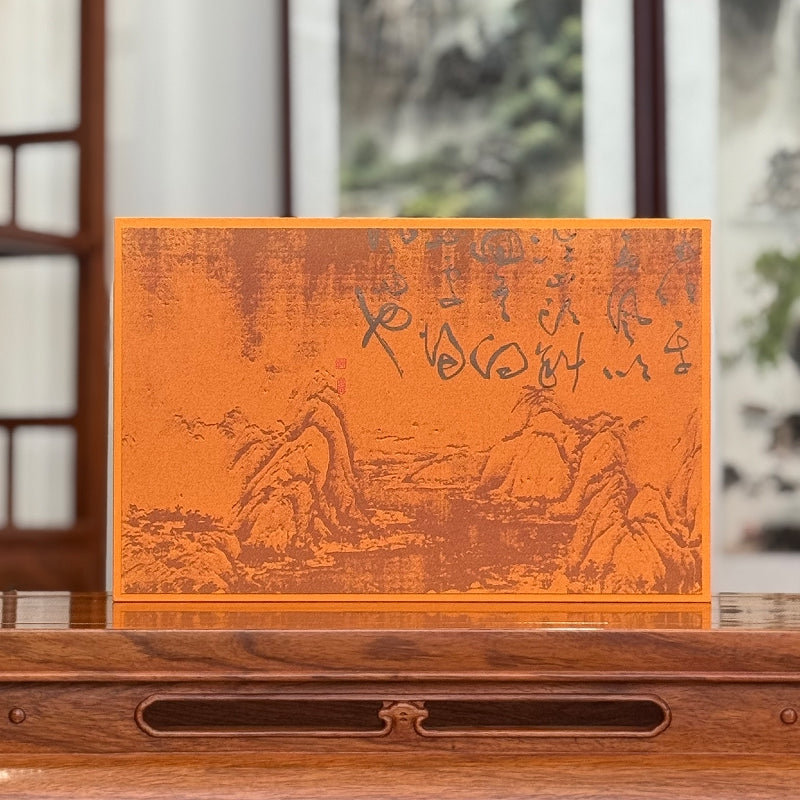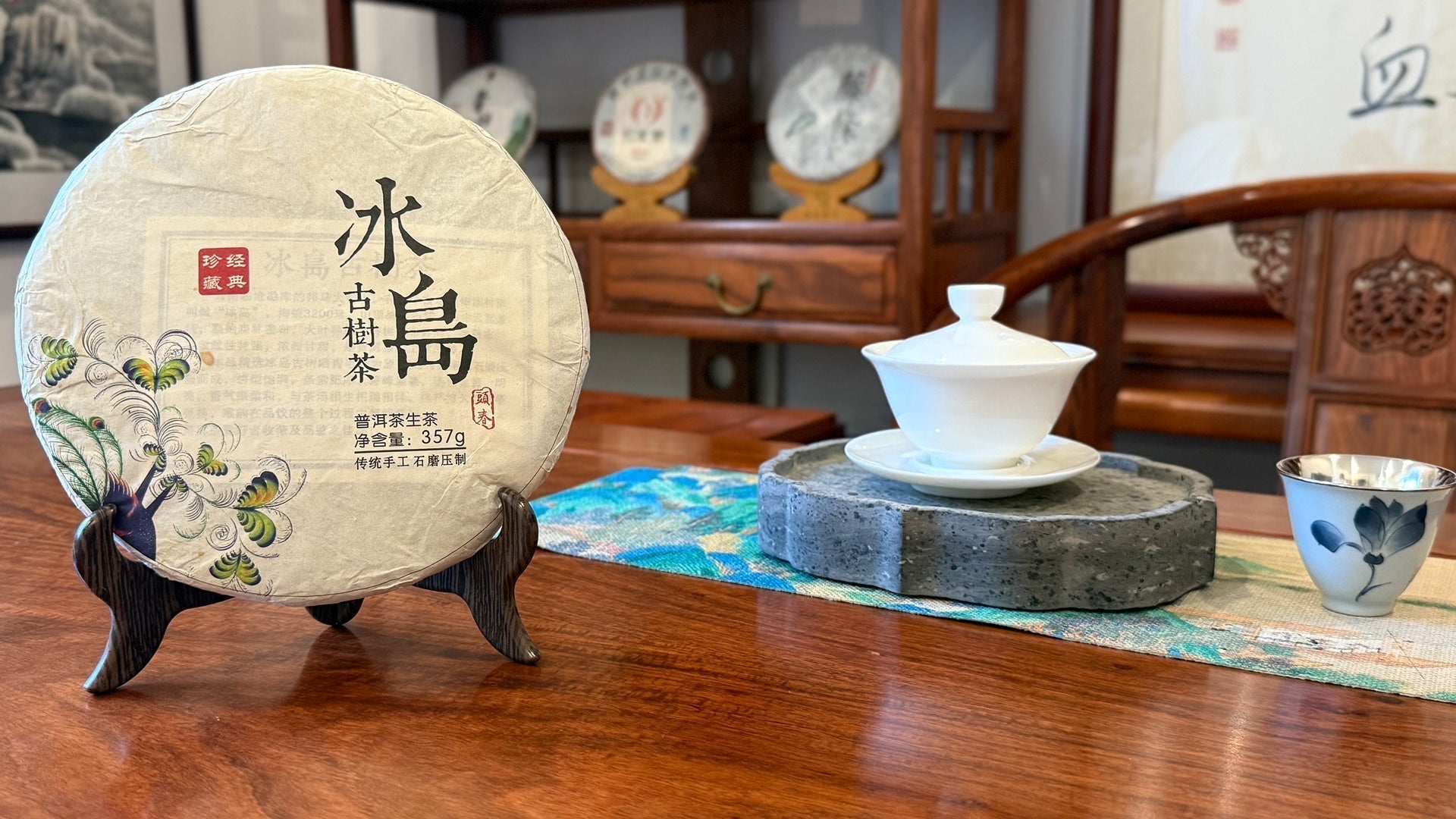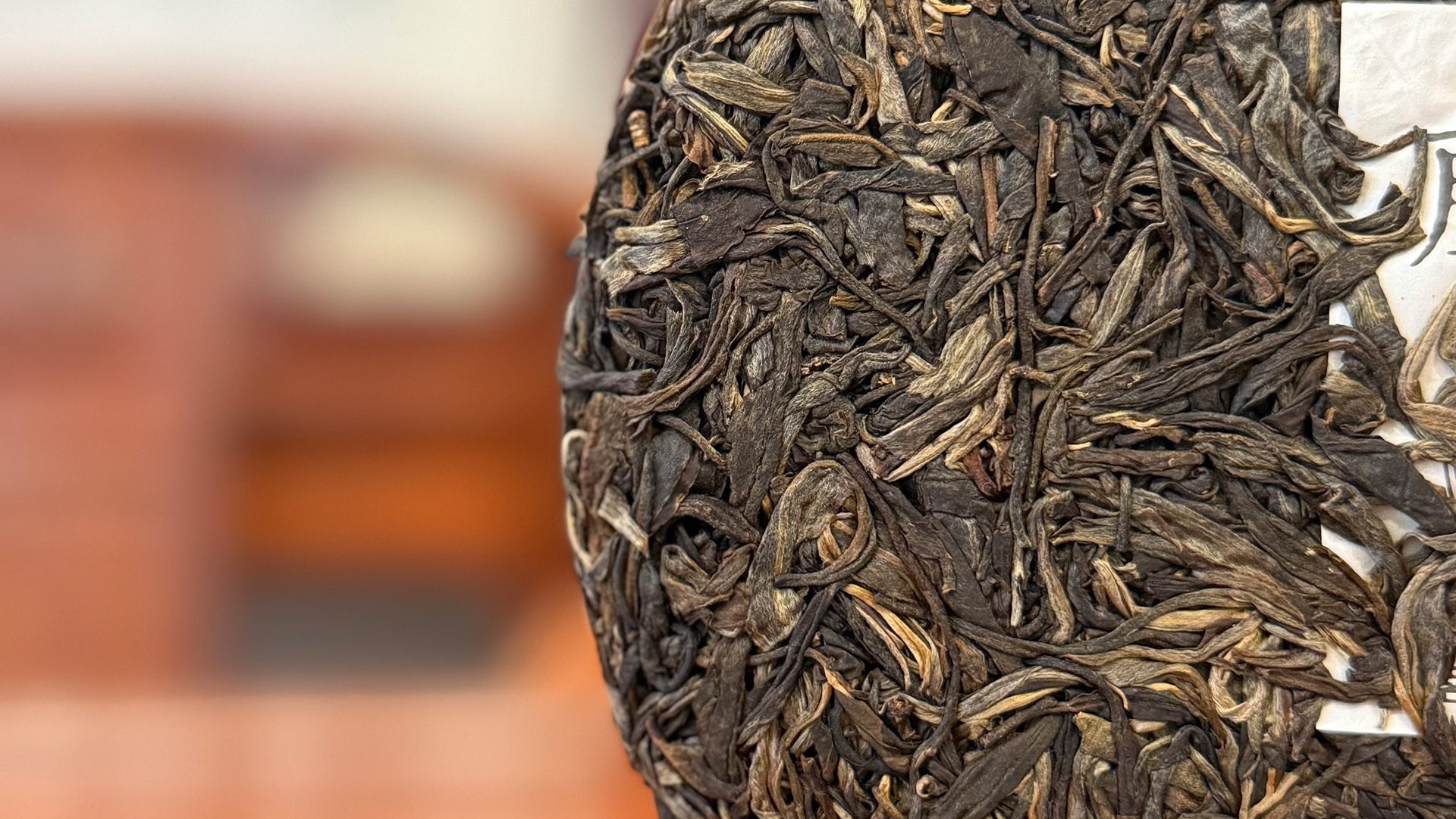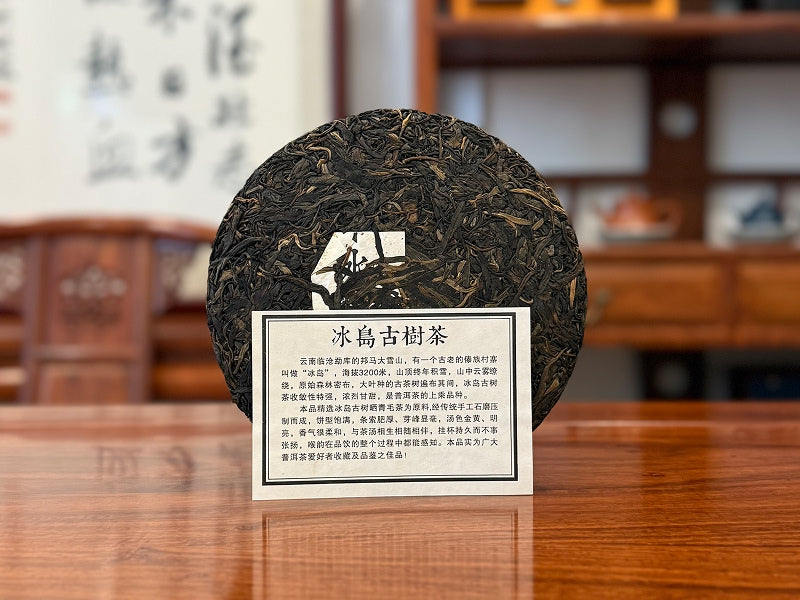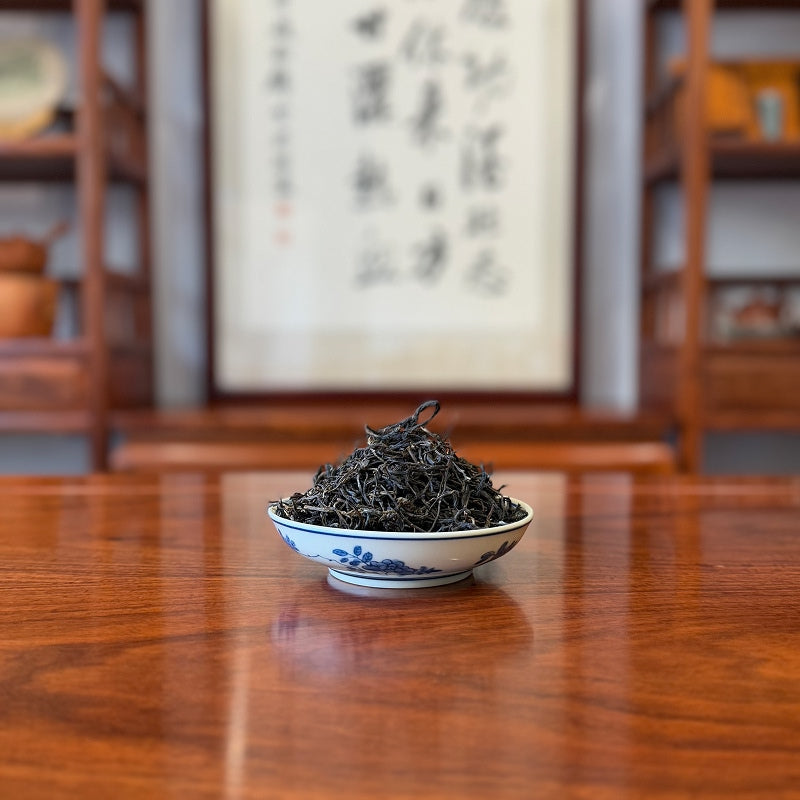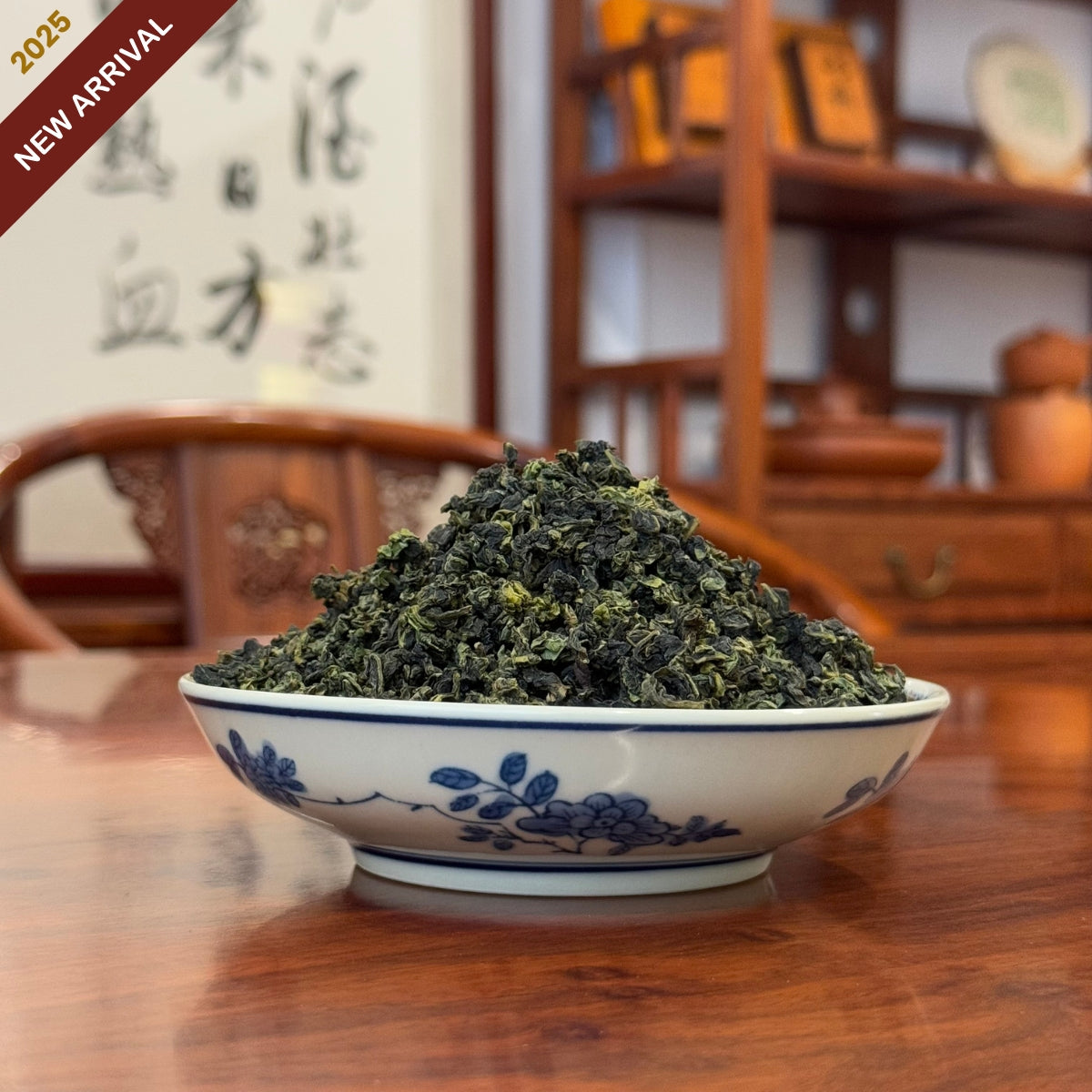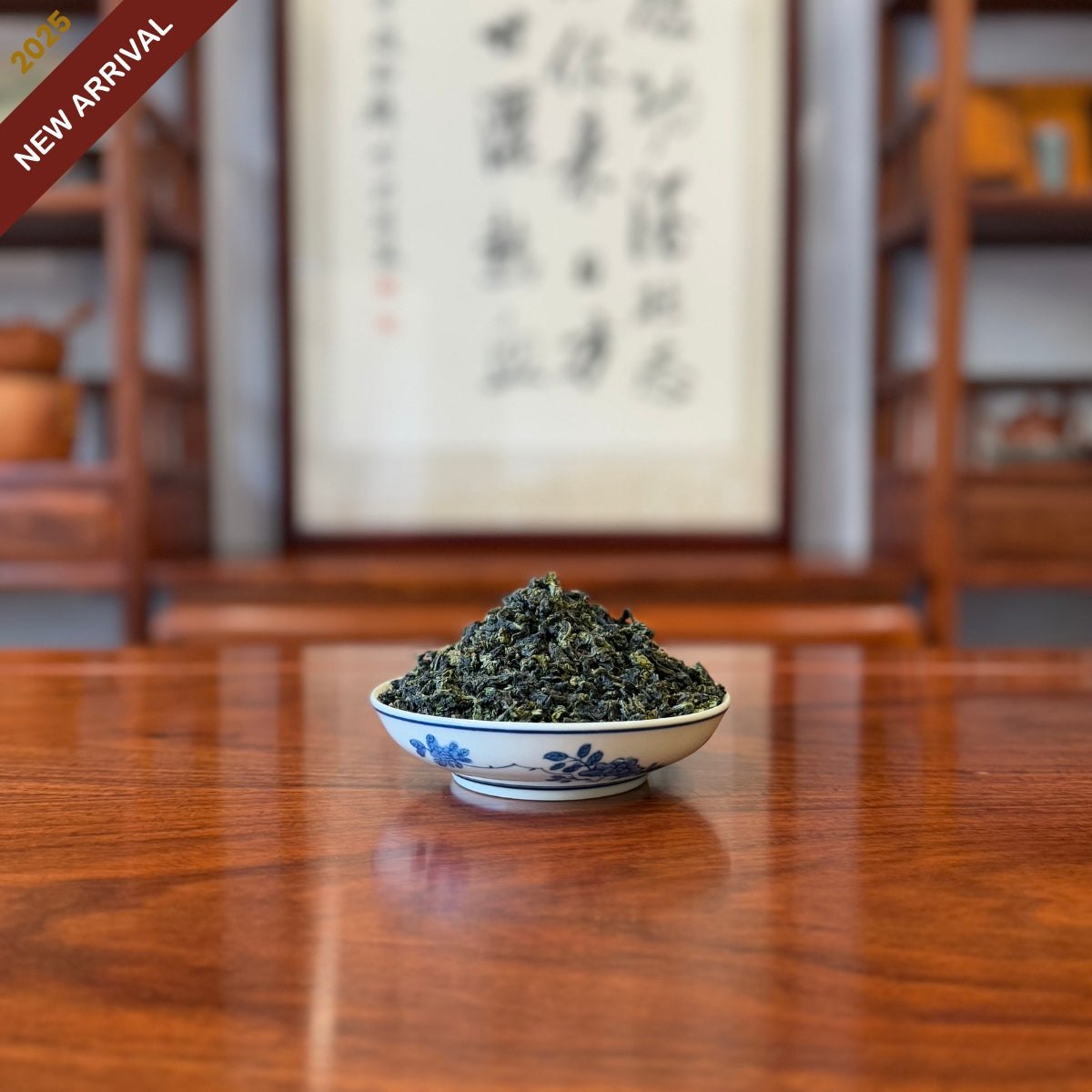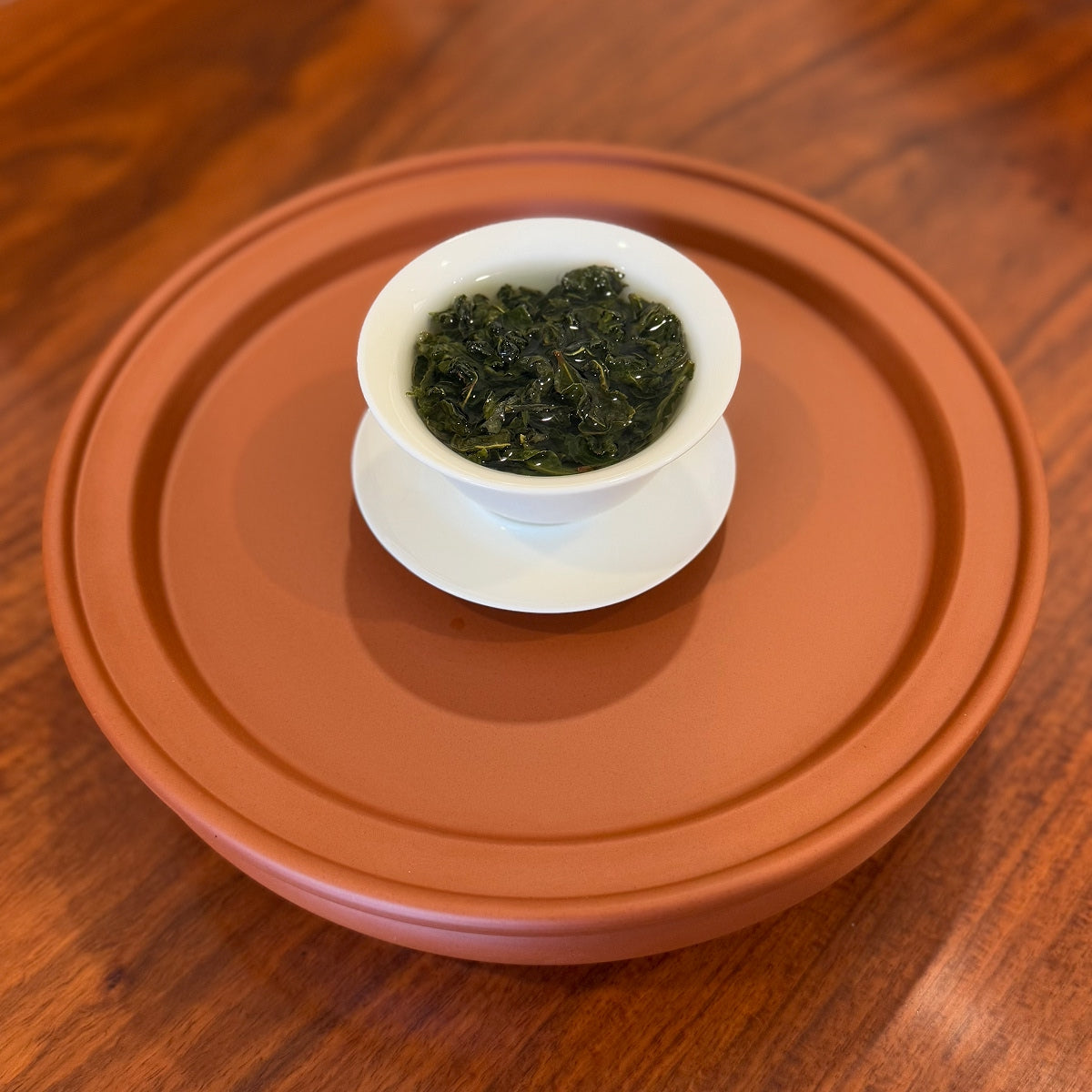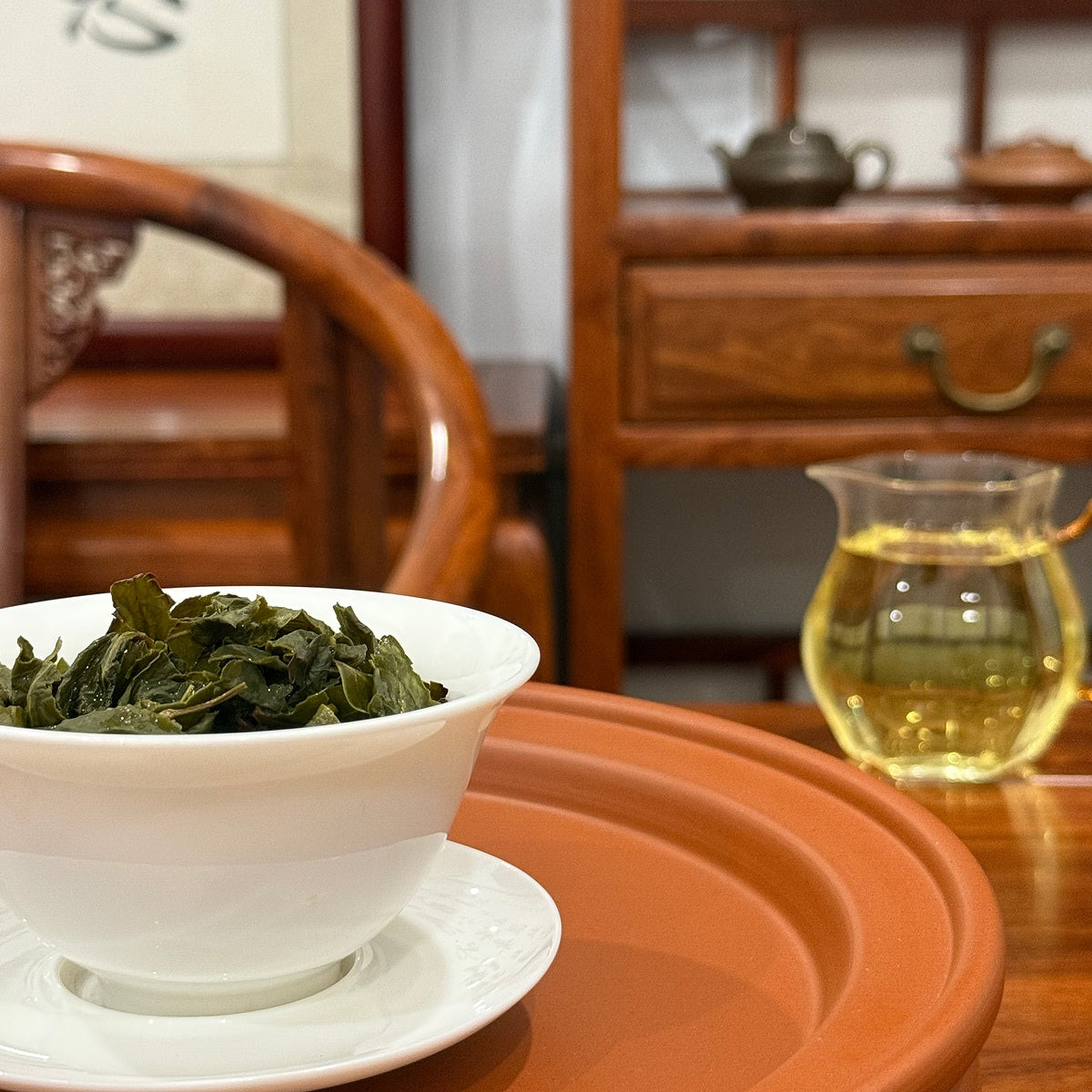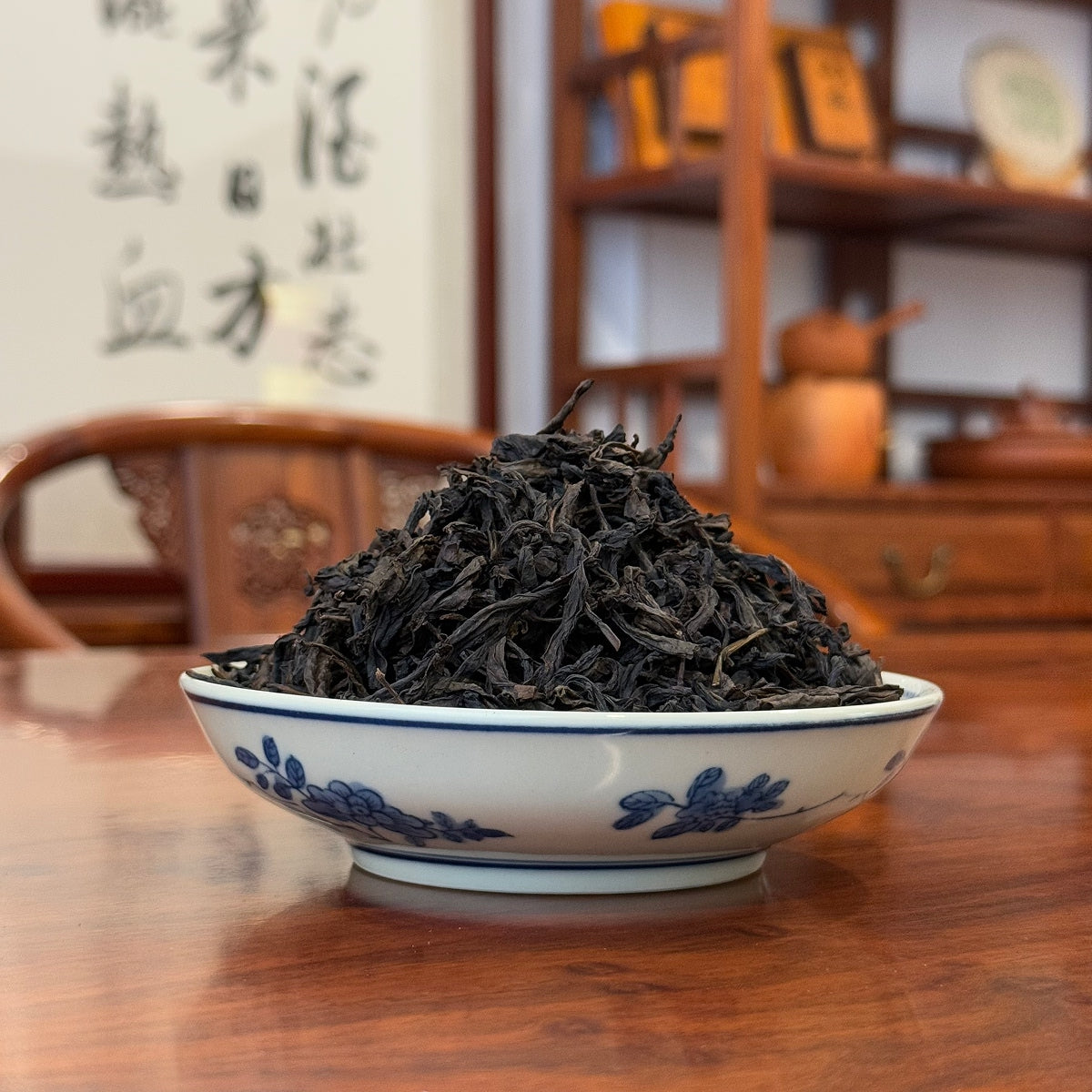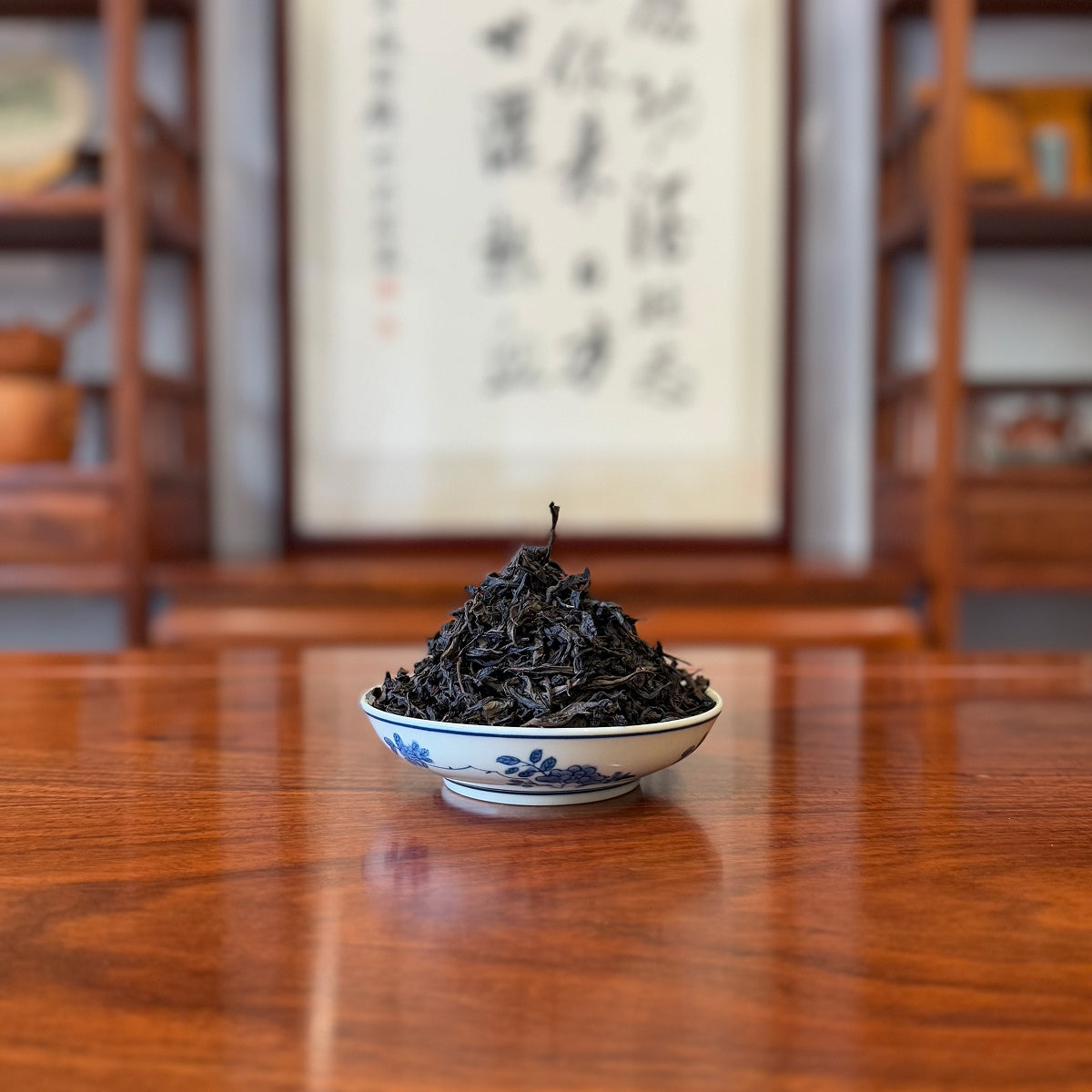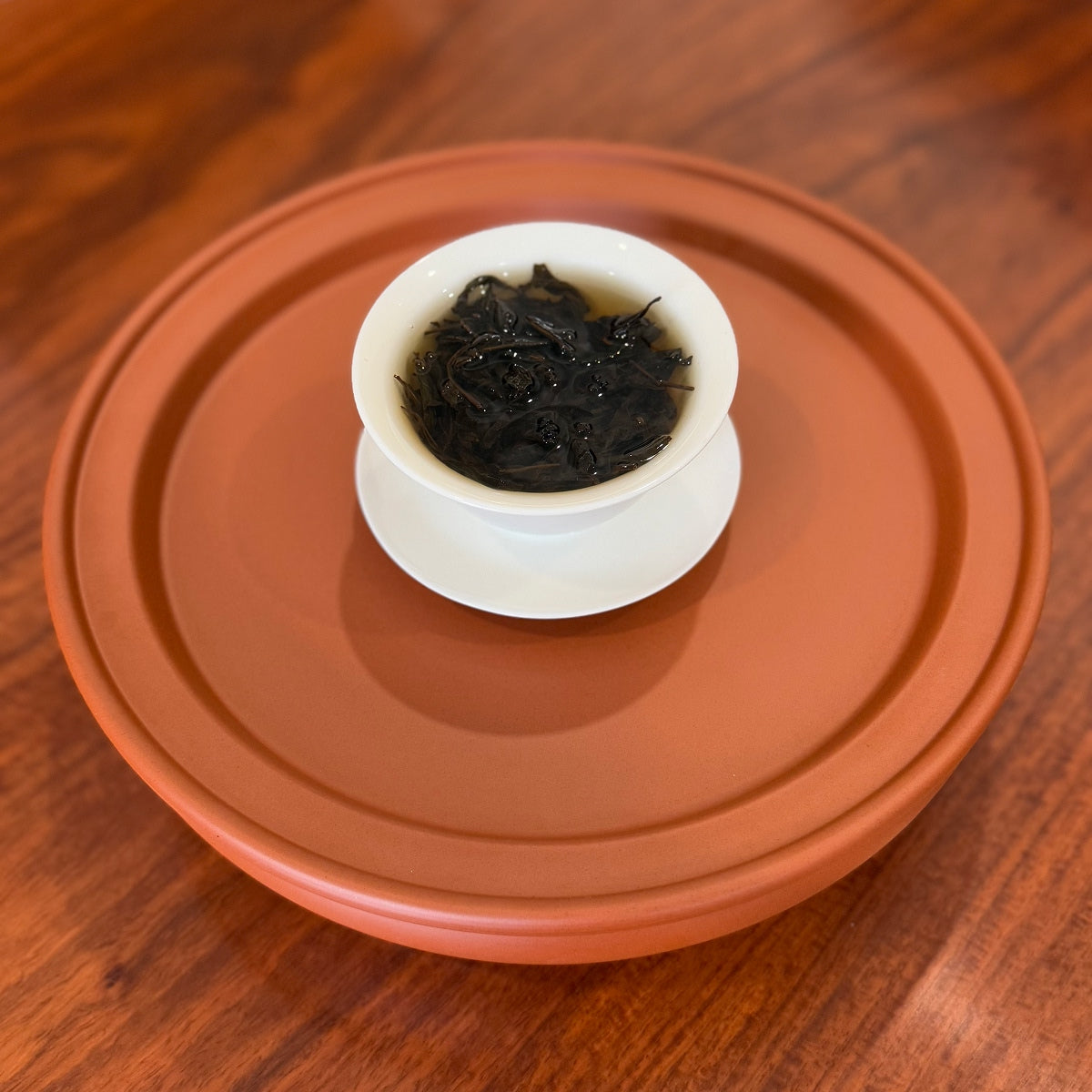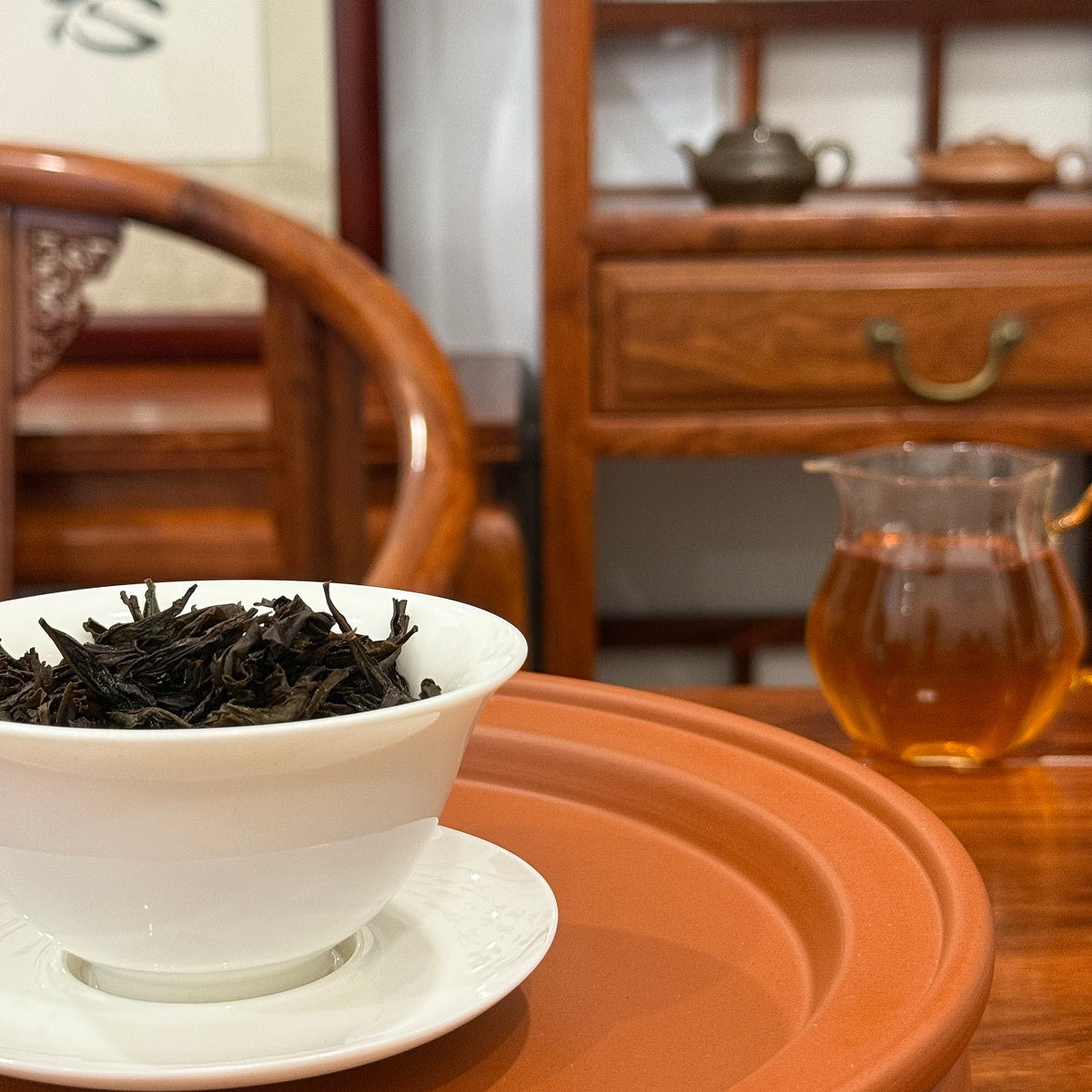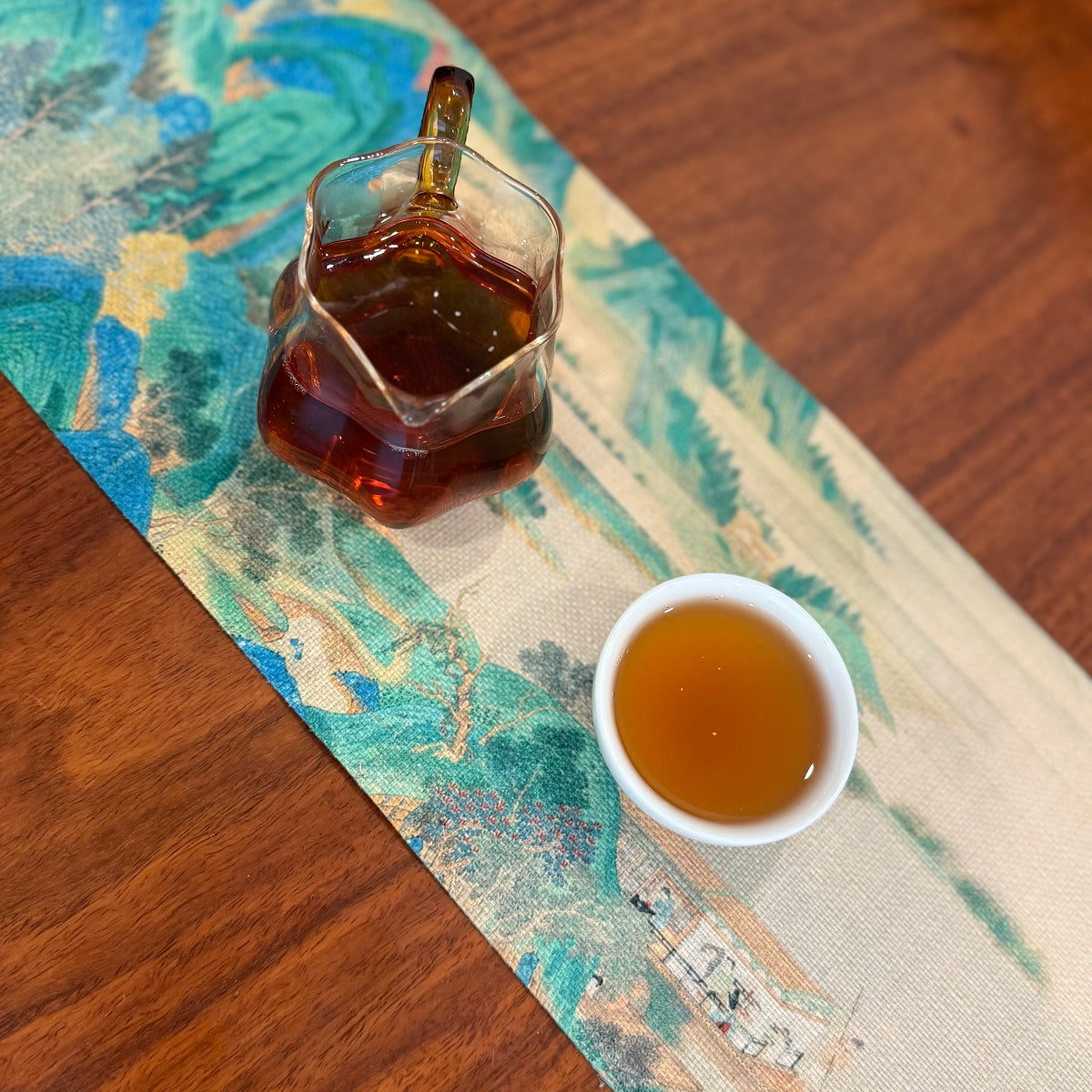
Qu'est-ce que le thé Pu-erh Teng Tiao ?
De nombreux amateurs de thé Pu-erh du Yunnan ont probablement entendu parler, voire goûté, de différents types de thé Pu'er : certains sont étiquetés par principales régions de production, sommets de montagne spécifiques ou villages, et d'autres identifiés par marque, série ou numéro de lot.
Cependant, le nom « thé Pu-erh Teng Tiao » (en forme de vigne) n'a rien à voir avec ces conventions d'appellation courantes. En Chine, on le considère souvent à tort comme appartenant à une région ou à une marque spécifique ; à l'international, ce nom est quasiment inconnu.
Variétés de thé Pu'er au Yunnan

Le thé Pu'er se décline sous de nombreuses formes, souvent identifiées par la région de production, la montagne, le village, la marque, la série ou le numéro de lot. Le Teng Tiao, ou Pu-erh en rotin comme l'appellent certains collectionneurs, se distingue de ces conventions d'appellation courantes par sa forme unique, semblable à celle d'un arbre à thé.
Ma première rencontre avec le thé Pu-erh Teng Tiao
Je suis Chen Wenjin, passionné de thé et maître de thé. Au cours des dix-sept dernières années, j'ai visité le Yunnan vingt-six fois pour étudier et sélectionner le thé Pu'er.

La première fois que j'ai entendu parler du « thé pu-erh Teng Tiao », c'était en 2010. Le nom lui-même m'a laissé perplexe : il ne s'agissait ni d'une appellation régionale, ni d'une marque célèbre, ni d'une variété d'arbre à thé. Étonnamment, les producteurs de thé n'ont pas évoqué les détails habituels comme la région ou l'âge de l'arbre ; ils ont préféré insister sur le mot « Teng Tiao ».
Curieux, j'ai commencé à en apprendre davantage sur ce type de thé Pu'er petit à petit grâce aux présentations des agriculteurs et aux recherches ultérieures.
Étude et sélection du thé Pu'er au Yunnan

Comme tous les thés Pu'er crus, le thé Pu'erh Teng Tiao (aussi appelé Pu'erh Rattan par certains collectionneurs) est récolté sur des théiers à grandes feuilles du Yunnan. Il ne s'agit pas d'une variété unique. Ce thé est issu d'une technique de taille de la dynastie Qing (1644-1912), qui consiste à tailler les arbres en forme de vigne. Ces dernières années, les cultivateurs ont commencé à lui donner un nom d'après cette forme particulière. Du fait de sa rareté, il reste relativement méconnu.
Les arbres à thé en forme de vigne derrière le pu-erh en rotin

Ces théiers poussent souvent dispersés dans la nature ou dans d'anciens jardins de thé isolés, ce qui rend la récolte difficile et inefficace. Lorsque leurs propres théiers ne parvenaient plus à satisfaire la demande du marché, les agriculteurs ont redécouvert ces arbres sauvages ou négligés. Cependant, après de longues périodes de croissance naturelle, de nombreux arbres présentent des feuilles épaisses mais peu de bourgeons tendres. Bien que vigoureux, ces arbres sont dans un état précaire.
Techniques de taille anciennes

Les agriculteurs utilisent une méthode ancestrale de taille et d'entretien, appelée « conservation des cimes et entretien des marqueurs ». Les branches et les feuilles excédentaires sont éliminées, ne laissant que la ou les deux feuilles supérieures des nouvelles pousses. Les branches latérales sont coupées, concentrant les nutriments sur les feuilles tendres restantes.
Au fil des années de taille « récolte et conservation », les arbres prennent progressivement une forme gracieuse, semblable à celle d'une vigne, rappelant celle du Pu-erh de rotin. Cette technique non seulement soutient la croissance et revitalise les arbres, mais améliore également la qualité du thé tout en réduisant considérablement le rendement. En d'autres termes, une longue branche peut produire de nombreuses feuilles, mais seules quelques feuilles tendres de première qualité sont conservées.

Nous pouvons ainsi confirmer que le thé Pu-erh Teng Tiao est véritablement biologique au sens le plus pur du terme, cultivé entièrement grâce à une taille minutieuse.
Récolte et redécouverte des vieux théiers
J'ai été fasciné par ce thé. Les années suivantes, j'en réservais une portion pour les achats annuels de printemps de mon équipe du Chinese Tea Group . Malheureusement, en raison de légères variations de goût, d'une offre limitée ou de prix élevés, nous manquions souvent de ce thé.

En 2019, dans une ancienne plantation de thé à Shuangjiang Mengku, dans le Yunnan, à 1 600 mètres d'altitude, nous avons découvert un lot de thé Pu-erh brut Teng Tiao, récolté au printemps sur des arbres centenaires. En août de la même année, nous avons pressé les feuilles pour en faire des galettes et adopté une double approche : le vieillissement et la récolte du thé pour observer son évolution aromatique annuelle, tout en partageant des lots limités avec les amateurs.
Pressage dans les galettes de thé
Après plusieurs années de vieillissement, la couleur du thé sec a progressivement évolué, mais les feuilles charnues et brillantes, ainsi que les pointes blanches denses, restent clairement visibles. Cela témoigne non seulement d'une sélection de haute qualité et de la robustesse des bourgeons, mais aussi d'une conservation adéquate pendant le vieillissement.

Préparation du gâteau au thé Pu-erh cru Teng Tiao Ancient Tree 2019
L'infusion de cette galette de thé Pu-erh cru Teng Tiao Ancient Tree 2019 permet d'apprécier pleinement les qualités d'un thé Pu'er de première qualité. Sa liqueur est dorée et claire, soyeuse en bouche, douce et rafraîchissante.

De la première infusion qui réveille doucement les feuilles, à la deuxième où le thé comprimé commence à libérer ses composés, et à la quatrième infusion où les feuilles sont entièrement déployées, le thé évolue d'un goût initial délicat à un profil riche et corsé.
Profil et évolution des saveurs

Les infusions cinq à huit représentent l'expérience ultime : l'arôme s'amplifie, les saveurs s'expriment pleinement et la profondeur et la complexité du thé sont à leur apogée. Même à la dixième infusion, le thé reste puissant et vibrant.
Après quinze infusions, le goût s'adoucit progressivement pour laisser place à une finale légère et sucrée, qui satisfera toujours les amateurs de douceur. La persistance de l'infusion, typique du thé de printemps, est parfaitement démontrée.

Pour ce gâteau de thé cru vintage, l'arôme est à un stade subtil entre le thé frais et le thé vieilli, conservant la fraîcheur et les bourgeons délicats des nouvelles feuilles tout en développant progressivement la profondeur et la richesse du thé Pu'er vieilli, avec une complexité en couches.
Fort de mon expérience et de mon expertise, je prévois qu'au cours des cinq prochaines années, sa saveur évoluera progressivement vers un style « sucré et onctueux », différent des notes terreuses que l'on retrouve souvent dans la plupart des thés Pu'er de dix ans d'âge. Bien qu'il soit occasionnel dans d'autres galettes de thé Pu'er, ce style est relativement rare.
Choisir le thé Pu'er adapté à votre goût

Les préférences varient : certains amateurs de thé apprécient le sucré, d’autres l’amer. Je ne peux pas juger si cette évolution gustative est « bonne » ou « mauvaise ». Pour les nouveaux venus dans le thé Pu'er, cela signifie également qu’ils n’ont pas besoin de trop réfléchir aux distinctions entre les saveurs terreuses et les arômes indésirables causés par un stockage inapproprié. En effet, certains thés sur le marché souffrent d’un stockage inadéquat ou d’une manipulation inadéquate.
Pourquoi faire confiance aux vendeurs de thé expérimentés
Choisir un vendeur de thé traditionnel, passionné et expert, reste la solution la plus fiable pour acheter du Pu'er ou du Pu-erh de rotin. N'hésitez pas à explorer notre collection de Pu-erh : nous proposons bien plus qu'un seul thé.

